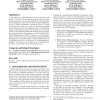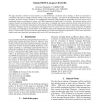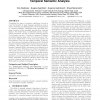23 search results - page 3 / 5 » Word Sense Disambiguation using Static and Dynamic Sense Vec... |
IIR
2010
13 years 9 months ago
2010
In this paper we exploit Semantic Vectors to develop an IR system. The idea is to use semantic spaces built on terms and documents to overcome the problem of word ambiguity. Word ...
LREC
2010
13 years 9 months ago
2010
Conventional methods for disambiguation problems have been using statistical methods with co-occurrence of words in their contexts. It seems that human-beings assign appropriate w...
LREC
2008
2008
Building a Bilingual Representation of the Roget Thesaurus for French to English Machine Translation
13 years 9 months ago
This paper describes a solution to lexical transfer as a trade-off between a dictionary and an ontology. It shows its association to a translation tool based on morpho-syntactical...
WWW
2011
ACM
13 years 2 months ago
2011
ACM
Computing the degree of semantic relatedness of words is a key functionality of many language applications such as search, clustering, and disambiguation. Previous approaches to c...
COLING
2010
13 years 2 months ago
2010
Word Sense Disambiguation (WSD) often relies on a context model or vector constructed from the words that co-occur with the target word within the same text windows. In most cases...



